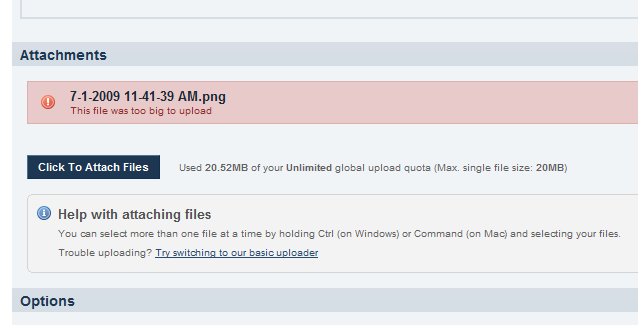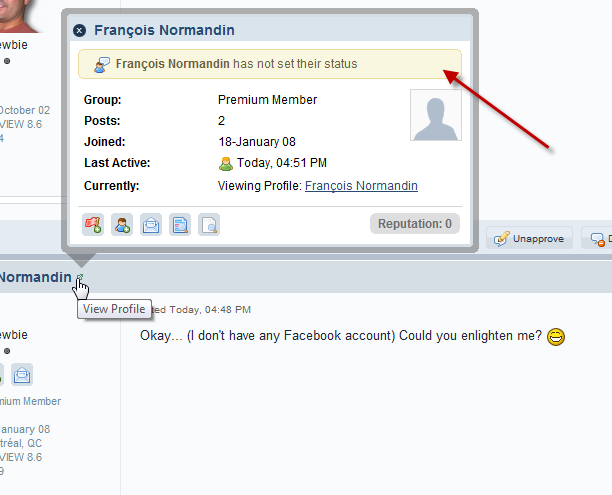-
Posts
6,217 -
Joined
-
Last visited
-
Days Won
120
Content Type
Profiles
Forums
Downloads
Gallery
Posts posted by Michael Aivaliotis
-
-
Name: JKI Progress Bar Dialog
Submitter: [/url]
Submitted: 02 Jul 2009
Category: User Interface
LabVIEW Version: 7.1License Type: BSD (Most common)
Copyright © 2006, James Kring, Inc.
- Contains an abort button on the dialog that can assist in aborting a running process.
- Can specify a limited preset amount of progress images via the "animation" selector
- Can update the status messages and progress in real-time after the dialog has been launched.
- Setting an animation value of 0 disables animation and displays only text.
-
Name: JKI Please Wait Dialog
File Submitter: LAVA 1.0 Content
File Submitted: 03 Jul 2009
File Category: User Interface
LabVIEW Version: 7.1
Version: 1.0.2
License Type: BSD (Most common)
Potentially make this available on the VI Package Network?: Undecided
Copyright © 2006, James Kring, Inc.
All rights reserved.
Author:
Michael Aivaliotis
Instructions:
This code has been tested to run under LabVIEW 7.1.1. It will probably work on any newer versions but it has not been tested. Just unzip the code into any folder of your chosing and open the example called, JKI pwd Example.vi. This shows a typical use case where you want to pop-up a non-blocking dialog and display a message and updated text from a parallel running task.
Features:
- Can specify a limited preset amount of progress images via the "animation" selector
- Can update the status message in real-time after the dialog has been launched.
- Setting an animation value of 0 disables animation and displays only text.
- Handles being built into an application
- The dialog is not modal when run in the development environment however it becomes modal when built into an executable.
Version History:
1.0.2:
Renamed VI prefix from MNA to JKI.
Added more documentation to diagram and VI descriptions.
1.0.1:
Fixed bug where dialog was not centering on screen.
Changed dialog behaviour so it updates position on screen before the front panel is open.
1.0.0:
Initial release of the code.
-
-
-
What I find odd with this reputation system is that it can only go up (apparently).
Yes, this was configured this way. We can allow negative but we won't.
-
Please upload small under 100Kb zip files
-
As you know there is a new file upload feature on the forums: The Flash uploader. This allows multiple file uploads to a post at the same time and it also has upload progress bars (very cool). This can be enable in your Settings:
 However it seems like some of us are having problems with the flash uploader. They get the following error:
However it seems like some of us are having problems with the flash uploader. They get the following error:I'd like to know the extent of the problem:
- Please enable the flash uploader (if not already enabled)
- Try to upload a small file (a few kb) to this thread using the flash uploader.
- If you have success then that's fine, don't post the reply.
- If you get an error, then post the reply and specify what browser(w\version) and OS you are using.
-
Trying to upload my personal image failed because the file was too large. I had to manually shrink it down before uploading it.
The problem was not the dimensions but the size on disk. The limit was set to 50Kb. I've increased it to 200Kb.
-
On a related note, when will the Wiki be back?
Ton
In a few days hopefully. There was a reorganizing of the domains. The wiki will no longer be a LAVA subdomain anymore. It will be on a different domain with its own login.
-
Does the View counter update less frequently than the Reply counter?
Yes, this is done on purpose by the developers of the forum application (IPS). This data is refreshed hourly I think. This is to reduce calls to the database that stores the views.
-
Gary, we're working on importing the old content. In the meantime, feel free to start new topics.
-
 1
1
-
-
-
This works the same as the facebook status. You can put whatever you like there. have fun with it.
-
-
NI's put together a new section on their site called the LabVIEW Idea Exchange:
QUOTE
The NI Idea Exchange is a product feedback forum where NI R&D and users work together to submit ideas, collaborate on their development, and vote for the ones they like best. NI R&D will incorporate the best ideas in future product versions. Post an idea or add your opinion on an existing one today. -
QUOTE (Cat @ May 28 2009, 09:40 AM)
So http://forums.lavag.org/SCRIPTING-IS-AVAILABLE-t14186.html' target="_blank">scripting is released while Cat is gone... Nice!

-
QUOTE (joshxdr @ May 29 2009, 07:29 AM)
Hi all, I am a mentor for a FIRST robotics team trying to set up source code control for our next season. Unfortunately the version of LabVIEW provided to FRC does not provide a license to "CMP compare two VIs.vi".I think you should lobby NI strongly to get them to add these pro features to the version of LV for FRC, including integrated source code control. If we are trying to teach the students proper software engineering then we should give them all the tools.
-
It's nice to see this finally come to fruition for sure. :thumbup:
Thank You NI.
I'd also like to see scripting discussions continue here on LAVA and hopefully y'all won't abandon us for the dark side. We have some excellent gurus on LAVA that were able to do cool things even with scripting locked. I can only imagine the possibilities now that it's been unleashed.
As far as complaining... of course we'll still complain. Let's not forget XNodes and project environment integration.
-
A new article is up with info on how to unlock scripting:
Here are the links for scripting download:
- LabVIEW Scripting API - Vista.zip (6.0 MB)
- LabVIEW Scripting API - WinXP.zip (6.0 MB)
- LabVIEW Scripting API - Vista.zip (6.0 MB)
-
This is an excellent suggestion Ton and something I have thought of myself.
-
I saw this movie with my family. It will definitely spark a new generation of trekers. Great movie!
-
Some news over here on this topic.
-
NI has started a new group on their communities page called LabVIEW APIs.
At the top of the page they announce that LabVIEW Scripting is on the way:
-
I'd really like to find out how they fold this t-shirt:








crelf is linked to source code control?
in LAVA Lounge
Posted
Of course I had to filter based on "small".